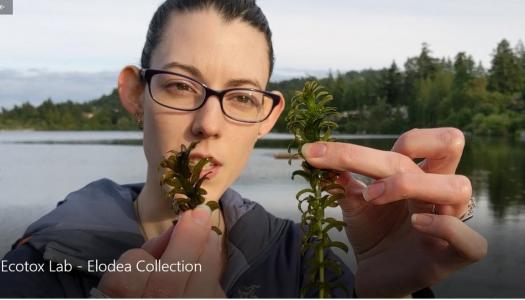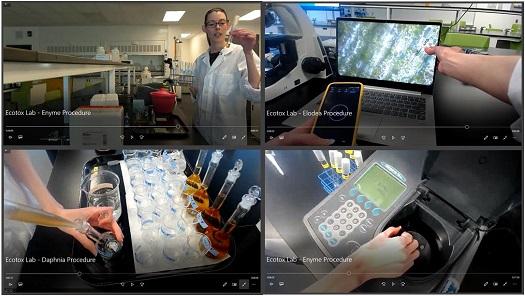Moving BSc labs online in response to COVID-19

One of the biggest challenges of moving the BSc ES program and BSc EM residency online, in response to COVID-19, was creating a plan for the labs. Luckily, both groups had completed the majority of their labs earlier in the program during the Biology, Microbiology, Chemistry and Environmental Chemistry courses. The impacted labs for both programs were the Wastewater and Ecotoxicology labs.
The Wastewater lab was the first lab in both timetables after classes moved online. With little time to transfer this lab online, we assembled class data from previous years and a document containing photos showing the results for each lab section. The students completed the lab assignment as usual, except they collected their data from the photos rather than samples in the lab. The techniques and theory were covered in an online lecture.
The Ecotoxicology labs were next in the timetables. The scheduling of these labs differed between the two groups of students.
The BSc EM cohort completed their third residency online following their regular timetable. This allowed us to Livestream the labs during the scheduled lab periods. One lab required sample collection before the lab so prior to the Livestream, we posted a video showing how to collect Daphnia from a pond at Beacon Hill Park. We used BlueJeans for the Livestream and two cameras so that we could switch back and forth between views. The Livestream was set-up like a cooking show, in the way that we were able to show all the sections of the lab and prevent any waiting around for results. For both labs, we started with a wide view for the introduction and then zoomed in to explain and show the step-by-step procedure. We then used the close-up camera to show the sorting of the Daphnia and the reaction of the enzyme in the spectrophotometer. A data set was posted so the students could complete the lab report as usual.
In teams, the BSc ES students draft lab procedures and then book lab time once these procedures are approved. Since each group’s approval occurs separately and everything is online this year, it was set up so each group gained access to the files at different times. All four labs were filmed the same as the Livestream minus being live. The Algae and Elodea labs require microscopes to count the algae cells and see the cytoplasmic streaming in the Elodea cells, so the close-up camera was set-up to show a computer screen that was hooked up to the microscope Wi-Fi camera. A second collection video showed how to collect Elodea from Glen Lake. As each team receives an approved procedure, the necessary videos, data sets and other supplemental files are posted to Moodle so they can complete the lab report as they normally would.
While there is no way to fully replace the hands-on experience of being in the lab in an online format, we hope the documents and videos provided enhanced the learning experience as much as possible. This creative approach to adapting to an extraordinary circumstance allows both groups of students to graduate from their programs on time.
